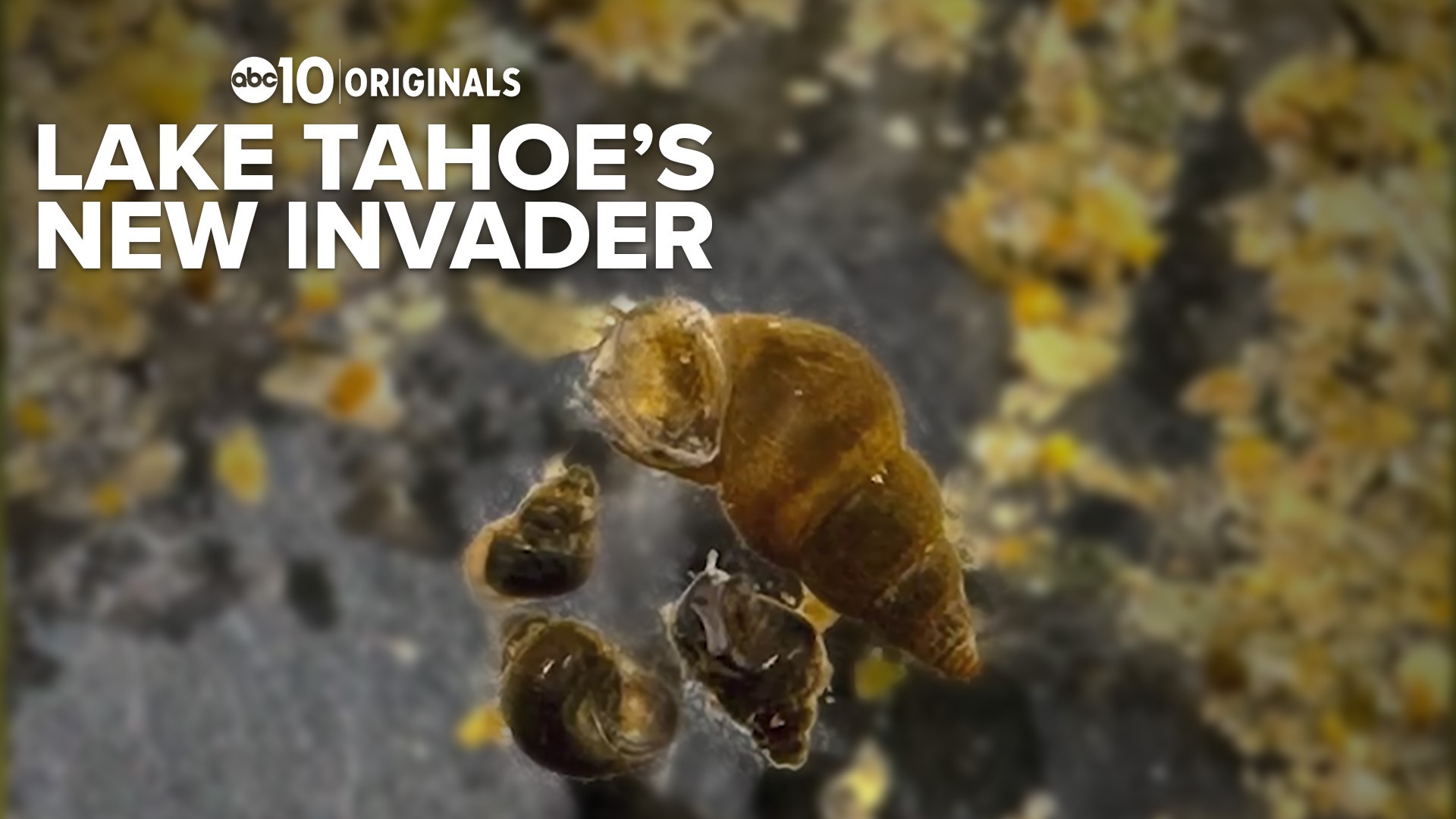SOUTH LAKE TAHOE, Calif. — A startling discovery beneath Lake Tahoe’s pristine water has regulators and scientists scrambling to size up the potential threat to the local ecosystem.
Two days after Labor Day, divers discovered the lake’s first new invasive species in 15 years: the New Zealand mudsnail.
"I'm worried because this is something we've tried to keep out,” said Dennis Zabaglo, the Aquatic Invasive Species Program Manager for the Tahoe Regional Planning Agency.
These snails are much smaller than the garden variety you’re familiar with. Each individual mudsnail takes up less space than a grain of rice, small enough to fit several on your fingernail.
Thousands upon thousands of the tiny gastropods have sprung up in a colony on the sandy lakebed offshore of the Tahoe Keys subdivision.
All living things in and around Lake Tahoe are connected in what ecologists call a “food web.” Each time a new invasive species establishes itself in the lake, the food web can be altered in dramatic ways.
“It can be extremely devastating,” said Zabaglo.
He points to the last invasive mollusk to invade Lake Tahoe: the Asian Clam.
First found in 2001, the clam’s population has exploded over the last two decades. Clamshells litter the lakebed in large swaths, adding calcium to the water. When they’re alive, the clams pump out nutrients fueling toxic algae blooms.
Much like the Asian Clam, each individual New Zealand mudsnail has the ability to make babies all on its own.
“They are asexual, so you only need one,” said Zabaglo, noting there are three genetic clones of the mudsnail making up the entire known population in the United States.
A mature female mudsnail can clone itself at a rate of about once per workday.
“One snail and its offspring can result in over 2.7 billion snails within four years,” according to the California Department of Fish and Wildlife.
The New Zealand mudsnail also has a superpower: it can survive being eaten alive.
Biologist Michelle Baker, currently the dean of science at Utah State University, was co-author of a study measuring the impact of mudsnails on fish.
When she and her team fed trout a diet of mudsnails, the trout lost weight at a rate faster than starving fish.
“Some of the snails, a little more than half, passed through the gut and weren't digested,” said Baker.
How? Mudsnails have a shell-like structure called an operculum on their foot. This acts like a trapdoor, allowing the animal to seal itself inside the shell.
“So they're stuck in their shell and they've got a little cover,” said Baker. “I think that probably allows them to pass through the digestive system without being injured.”
They can also survive being eaten by birds, which means that at least in theory this tiny bottom-dwelling invader has a way to fly.
Stopping birds from pooping in Lake Tahoe isn’t a realistic goal, but in truth, it’s not the most likely way the New Zealand mudsnail got here.
“Generally speaking with invasive species, the main vector is human activity,” said Zabaglo.
His agency, the TRPA, is focusing on trying to prevent people from helping the snails spread around Lake Tahoe or to other bodies of water.
Tahoe’s had mandatory inspections for motorboats since 2008.
Efforts to help paddlers clean, drain and dry their kayaks and paddleboards are still ramping up. Officials encourage people to use mobile cleaning stations being set up at some of the lake’s popular entry points.
It’s a task made tougher by the New Zealand mudsnail’s trapdoor: it can survive being dry for days, something that would spell certain death for most aquatic snails.
One of the most unsettling things about this development is it comes with a lot of unknowns. Complete eradication of the snails may never be possible. It’s unclear how much they might thrive in Lake Tahoe, which is growing warmer due to climate change and more nutrient-rich due to human development.
The mudsnails will certainly have an impact on Tahoe’s ecology, but “how” and “how much” remain big open questions.
“Because they're not in a lot of high alpine lakes, so there's not a lot of research,” said Zabaglo.
Scientists are engaged in fact-finding to study what happens next. For those who love the lake, the answers in the years ahead will be worth watching.
WATCH MORE ON ABC10: See what's below Lake Tahoe in a clear kayak

















